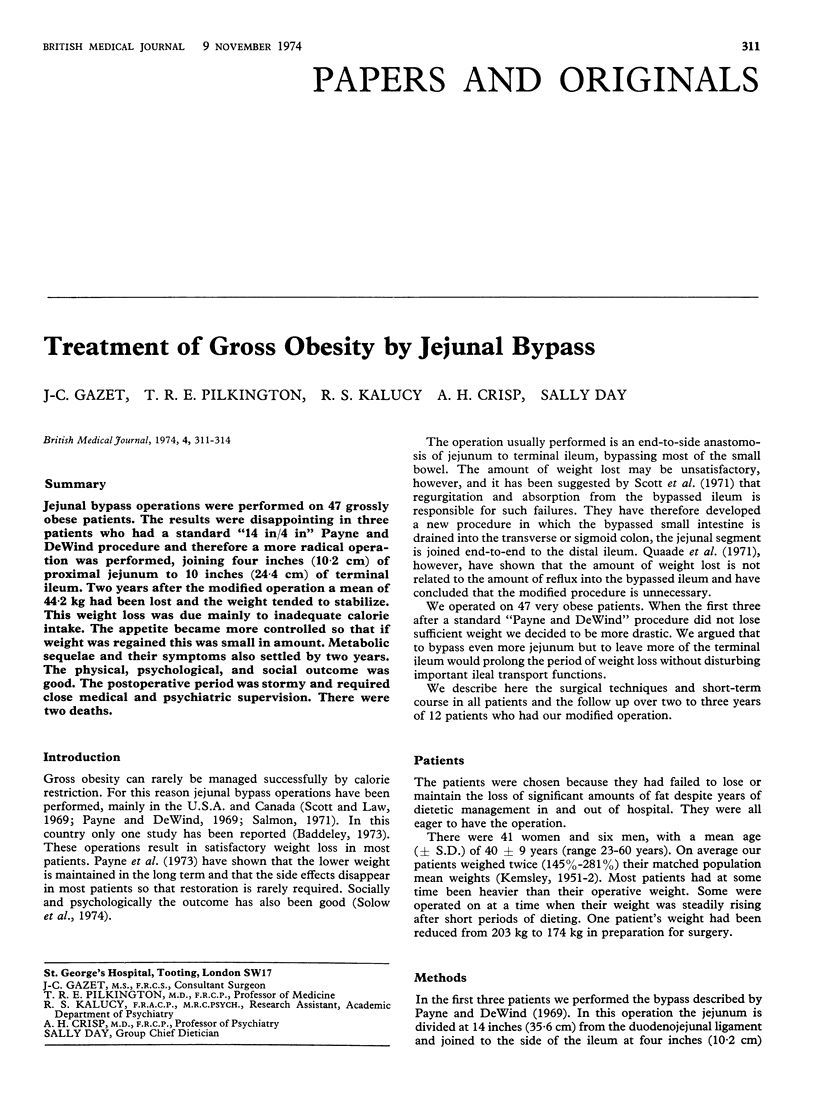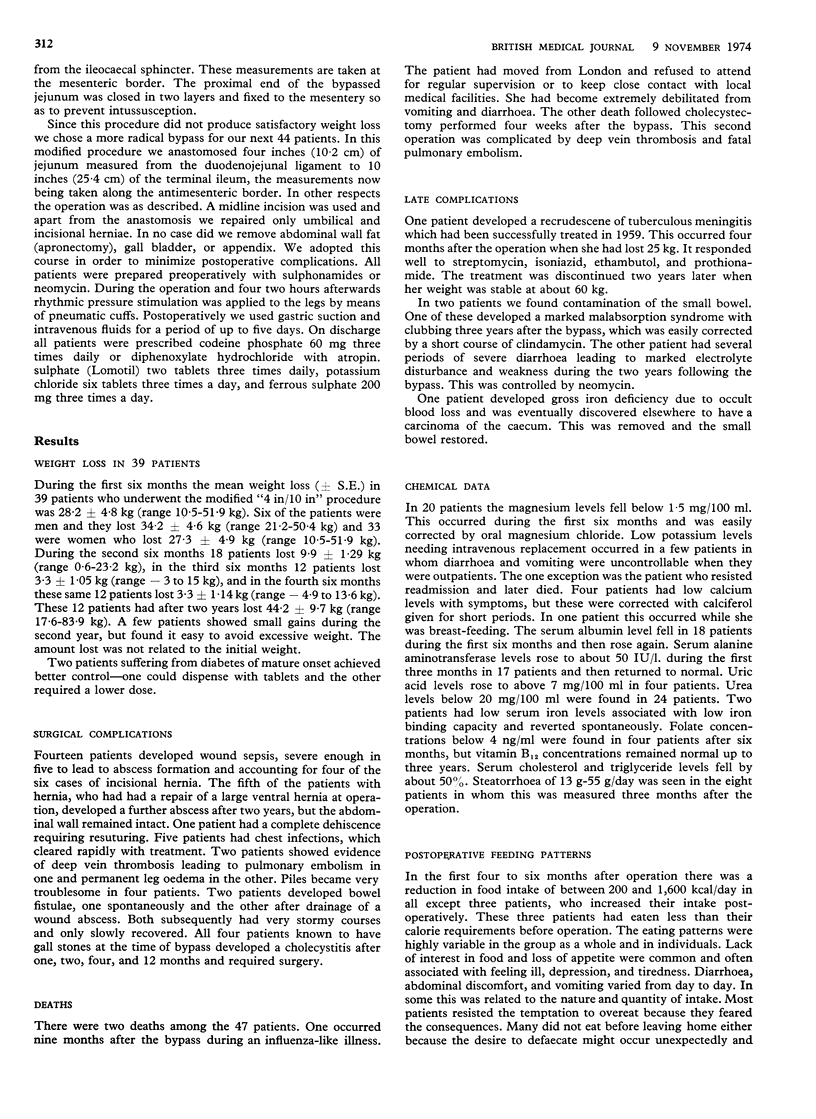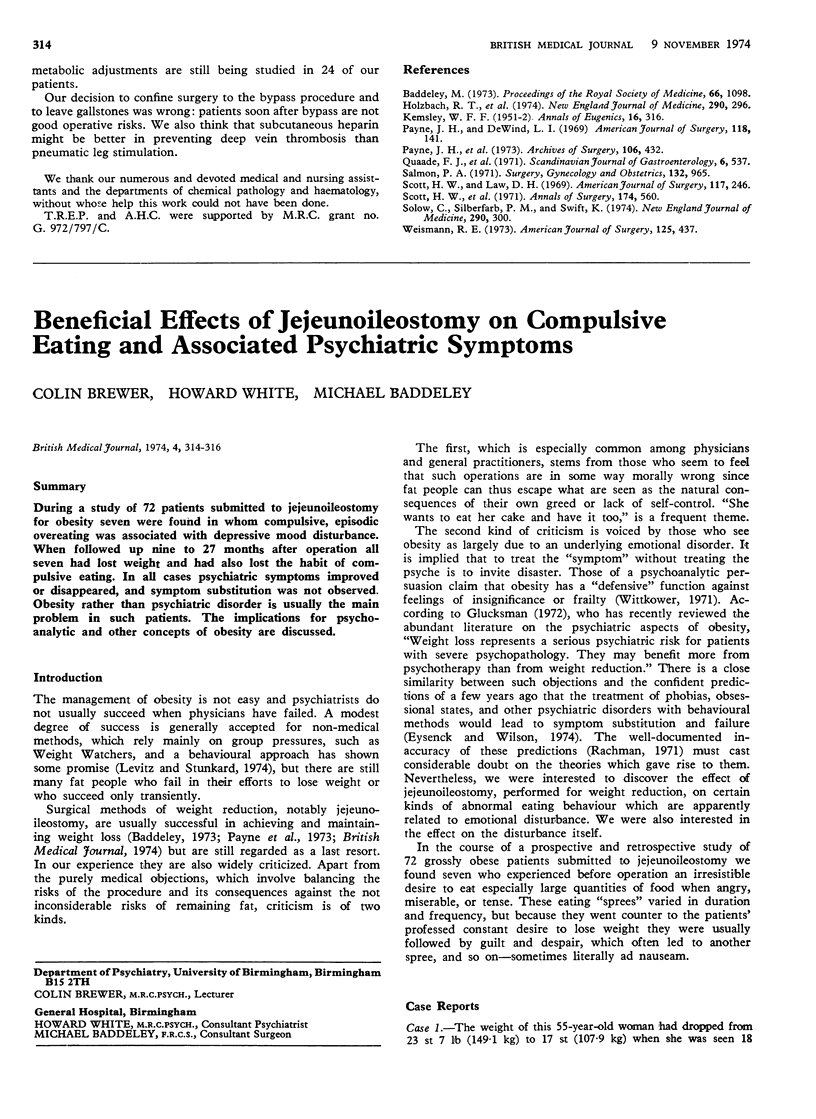Abstract
Jejunal bypass operations were performed on 47 grossly obese patients. The results were disappointing in three patients who had a standard “14 in/4 in” Payne and DeWind procedure and therefore a more radical operation was performed, joining four inches (10·2 cm) of proximal jejunum to 10 inches (24·4 cm) of terminal ileum. Two years after the modified operation a mean of 44·2 kg had been lost and the weight tended to stabilize. This weight loss was due mainly to inadequate calorie intake. The appetite became more controlled so that if weight was regained this was small in amount. Metabolic sequelae and their symptoms also settled by two years. The physical, psychological, and social outcome was good. The postoperative period was stormy and required close medical and psychiatric supervision. There were two deaths.
Full text
PDF



Selected References
These references are in PubMed. This may not be the complete list of references from this article.
- Baddeley M. Surgical treatment of obesity. Proc R Soc Med. 1973 Nov;66(11):1098–1099. [PMC free article] [PubMed] [Google Scholar]
- Holzbach R. T., Wieland R. G., Lieber C. S., DeCarli L. M., Koepke K. R., Green S. G. Hepatic lipid in morbid obesity. Assessment at and subsequent to jejunoileal bypass. N Engl J Med. 1974 Feb 7;290(6):296–299. doi: 10.1056/NEJM197402072900602. [DOI] [PubMed] [Google Scholar]
- Payne J. H., DeWind L., Schwab C. E., Kern W. H. Surgical treatment of morbid obesity. Sixteen years of experience. Arch Surg. 1973 Apr;106(4):432–437. doi: 10.1001/archsurg.1973.01350160050008. [DOI] [PubMed] [Google Scholar]
- Quaade F., Juhl E., Feldt-Rasmussen K., Baden H. Blind-loop reflux in relation to weight loss in obese patients treated with jejunoileal anastomosis. Scand J Gastroenterol. 1971;6(6):537–541. doi: 10.3109/00365527109181670. [DOI] [PubMed] [Google Scholar]
- Salmon P. A. The results of small intestine bypass operations for the treatment of obesity. Surg Gynecol Obstet. 1971 Jun;132(6):965–979. [PubMed] [Google Scholar]
- Scott H. W., Jr, Law D. H., 4th Clinical appraisal of jejunoileal shunt in patients with morbid obesity. Am J Surg. 1969 Feb;117(2):246–253. doi: 10.1016/0002-9610(69)90311-0. [DOI] [PubMed] [Google Scholar]
- Scott H. W., Jr, Sandstead H. H., Brill A. B., Burko H., Younger R. K. Experience with a new technic of intestinal bypass in the treatment of morbid obesity. Ann Surg. 1971 Oct;174(4):560–572. doi: 10.1097/00000658-197110000-00003. [DOI] [PMC free article] [PubMed] [Google Scholar]
- Solow C., Silberfarb P. M., Swift K. Psychosocial effects of intestinal bypass surgery for severe obesity. N Engl J Med. 1974 Feb 7;290(6):300–304. doi: 10.1056/NEJM197402072900603. [DOI] [PubMed] [Google Scholar]
- Weismann R. E. Surgical palliation of massive and severe obesity. Am J Surg. 1973 Apr;125(4):437–446. doi: 10.1016/0002-9610(73)90079-2. [DOI] [PubMed] [Google Scholar]


